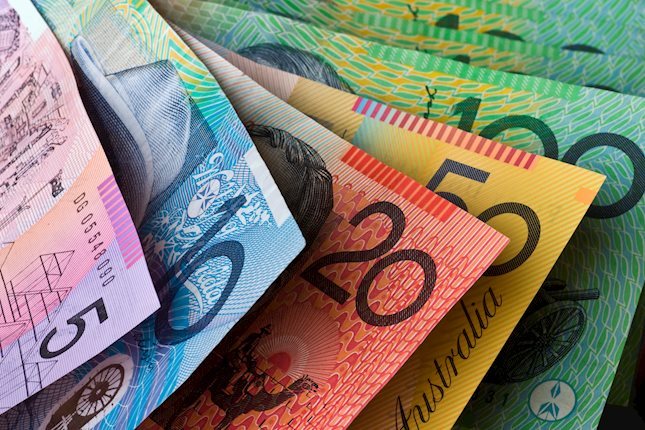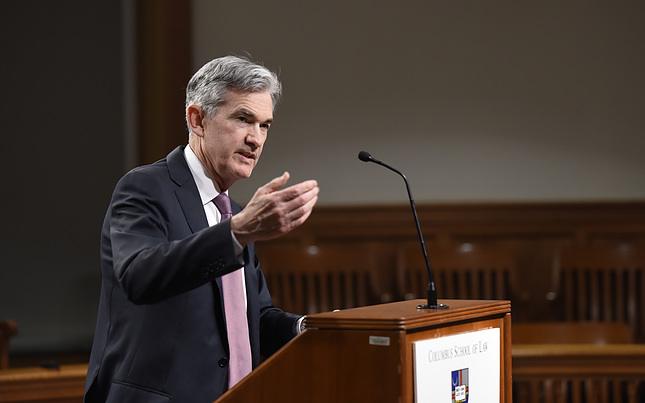- United Kingdom CPI rose 4.0% YoY in December vs. 3.8% estimate.
- Monthly British inflation jumped to 0.4% in December vs. 0.1% forecast.
- GBP/USD jumps toward 1.2650 on UK CPI inflation data.
The United Kingdom's (UK) Consumer Price Index (CPI) rose at an annual rate of 4.0% in December, up from a 3.9% increase seen in November, data published by the Office for National Statistics (ONS) showed Wednesday. The market consensus was for a growth of 3.8%.
The Core CPI (excluding volatile food and energy items) climbed 5.1% YoY in December, at the same pace as seen in November while beating estimates of 4.9%.
Meanwhile, the UK Consumer Price Index rebounded 0.4% MoM in December vs. expectations of a 0.2% growth and November’s -0.2% reading.
GBP/USD reaction to the UK CPI inflation data
GBP/USD caught a fresh bid on the surprise upside in the UK headline CPI data, rebounding toward 1.2650. The pair is trading at 1.2636, modestly flat on the day.
GBP/USD: 15-minutes chart
Pound Sterling price today
The table below shows the percentage change of Pound Sterling (GBP) against listed major currencies today. Pound Sterling was the strongest against the Australian Dollar.
| USD | EUR | GBP | CAD | AUD | JPY | NZD | CHF | |
| USD | 0.11% | 0.07% | 0.17% | 0.50% | 0.38% | 0.33% | 0.09% | |
| EUR | -0.11% | -0.04% | 0.06% | 0.40% | 0.28% | 0.23% | -0.02% | |
| GBP | -0.05% | 0.04% | 0.08% | 0.43% | 0.30% | 0.23% | 0.01% | |
| CAD | -0.16% | -0.05% | -0.08% | 0.35% | 0.23% | 0.17% | -0.09% | |
| AUD | -0.51% | -0.40% | -0.43% | -0.34% | -0.13% | -0.18% | -0.43% | |
| JPY | -0.38% | -0.26% | -0.41% | -0.22% | 0.13% | -0.05% | -0.29% | |
| NZD | -0.33% | -0.19% | -0.23% | -0.14% | 0.21% | 0.07% | -0.27% | |
| CHF | -0.09% | 0.02% | -0.01% | 0.08% | 0.41% | 0.29% | 0.24% |
The heat map shows percentage changes of major currencies against each other. The base currency is picked from the left column, while the quote currency is picked from the top row. For example, if you pick the Euro from the left column and move along the horizontal line to the Japanese Yen, the percentage change displayed in the box will represent EUR (base)/JPY (quote).
This section below was published at 23:15 GMT on Tuesday as a preview of the UK inflation data.
- The high-impact UK CPI data will be released by the Office for National Statistics on Wednesday.
- Headline and core annual inflation from the United Kingdom are set to fall, while monthly CPI is expected to rebound.
- The UK CPI report could significantly influence the BoE policy outlook, impacting the Pound Sterling.
With increased bets for an interest cut by the Bank of England (BoE) as early as April, the all-important Consumer Price Index (CPI) data from the United Kingdom (UK) will be closely scrutinized for gauging the timing of the BoE policy pivot and its impact on the Pound Sterling.
The Office for National Statistics (ONS) will release the UK inflation data at 07:00 GMT on Wednesday.
What to expect from the next UK inflation report?
The headline annual UK Consumer Price Index is seen growing by 3.8% in December, a modest slowdown from November’s 3.9% increase. The reading would be its lowest since September 2021, but still almost double the BoE’s 2.0% target.
The Core CPI inflation is seen falling further to 4.9% YoY in December, compared with a 5.1% growth recorded in November. Meanwhile, the British monthly CPI is expected to jump 0.2% after falling 0.2% in November.
Analysts at TD Securities (TDS) cited key reasons behind the likely easing in the headline inflation data, noting that “We don't expect a rebound from the weak Nov report, and instead look for more weakness in Dec. A rise in tobacco duty adds some upside pressure on the headline, but softness in leisure and travel should support a decent fall in services to 6.0% YoY— a notable 0.9 ppts below the MPC. This should support a dovish pivot soon from the MPC in Feb, but cuts likely won't come until May.”
At a hearing of the Treasury committee earlier this month, BoE Governor Andrew Bailey said he hoped the recent fall in the cost of mortgages would continue. Bailey refrained from commenting on the monetary policy outlook but said, “let’s just take the market for a moment – obviously that is feeding through into mortgage costs and I hope that is something that continues.”
After the UK central bank held the policy rate at 5.25% at its December meeting, Governor Bailey pushed back against speculation in the financial markets that the interest rates would soon be reduced, stressing that the fight to bring inflation down to 2% is “hard work.”
A surprise fall in inflation in November, however, raised hopes that the BoE would begin cutting interest rates sooner than expected. The ONS said that falling petrol prices were largely behind the surprise drop in inflation last month, alongside easing food and household goods price inflation.
In the quarter to November, UK wages grew at the slowest pace in almost a year, adding to signs of easing inflationary pressures and BoE’s worries. Average Earnings Excluding Bonus in the UK rose 6.6% 3M YoY in November, slowing from October’s 7.2% increase.
Meanwhile, Britain's Gross Domestic Product (GDP) expanded by 0.3% in November after October’s 0.3% decline. But the economy remains at high risk of slipping into a recession as households continue to bear the burden of high energy bills and borrowing costs.
Against this backdrop, the upcoming UK inflation data could help estimate the pace and timing of the central bank’s interest rate cuts this year, which could have a significant impact on the value of the Pound Sterling.
When will the UK Consumer Price Index report be released and how could it affect GBP/USD?
The UK CPI data will be published on Wednesday at 07:00 GMT. The Pound Sterling is correcting from two-week highs of 1.2786 against the US Dollar in the run-up to the United Kingdom’s inflation showdown. The US Dollar is regaining its safe-haven status amid an escalation of geopolitical tensions in the Middle East.
An unexpected uptick in the headline and core inflation data could pour cold water on expectations of a BoE rate cut as early as April, providing the much-needed lift to the Pound Sterling. In such a case, GBP/USD could revert toward the 1.2785 region. Conversely, GBP/USD could extend its correction toward 1.2600 if the UK CPI data shows a rapid fall in inflation and affirms BoE April rate cut bets.
Dhwani Mehta, Asian Session Lead Analyst at FXStreet, offers a brief technical outlook for the major and explains: “The GBP/USD pair has breached the 21-day Simple Moving Average (SMA) at 1.2712, as the downside correction unfolds. The 14-day Relative Strength Index (RSI) is piercing the midline from above, suggesting more pain ahead of the Pound Sterling.”
“A sustained move below the ascending 50-day SMA at 1.2611 could intensify selling pressure on the Pound Sterling. The next downside targets are seen at the critical 200-day SMA at 1.2548 and the 1.2500 round level. Alternatively, any recovery in GBP/USD will need acceptance above the 21-day SMA support-turned-resistance at 1.2712, above which doors will reopen for a test of the two-week high of 1.2786,” Dhwani adds.
Inflation FAQs
What is inflation?
Inflation measures the rise in the price of a representative basket of goods and services. Headline inflation is usually expressed as a percentage change on a month-on-month (MoM) and year-on-year (YoY) basis. Core inflation excludes more volatile elements such as food and fuel which can fluctuate because of geopolitical and seasonal factors. Core inflation is the figure economists focus on and is the level targeted by central banks, which are mandated to keep inflation at a manageable level, usually around 2%.
What is the Consumer Price Index (CPI)?
The Consumer Price Index (CPI) measures the change in prices of a basket of goods and services over a period of time. It is usually expressed as a percentage change on a month-on-month (MoM) and year-on-year (YoY) basis. Core CPI is the figure targeted by central banks as it excludes volatile food and fuel inputs. When Core CPI rises above 2% it usually results in higher interest rates and vice versa when it falls below 2%. Since higher interest rates are positive for a currency, higher inflation usually results in a stronger currency. The opposite is true when inflation falls.
What is the impact of inflation on foreign exchange?
Although it may seem counter-intuitive, high inflation in a country pushes up the value of its currency and vice versa for lower inflation. This is because the central bank will normally raise interest rates to combat the higher inflation, which attract more global capital inflows from investors looking for a lucrative place to park their money.
How does inflation influence the price of Gold?
Formerly, Gold was the asset investors turned to in times of high inflation because it preserved its value, and whilst investors will often still buy Gold for its safe-haven properties in times of extreme market turmoil, this is not the case most of the time. This is because when inflation is high, central banks will put up interest rates to combat it.
Higher interest rates are negative for Gold because they increase the opportunity-cost of holding Gold vis-a-vis an interest-bearing asset or placing the money in a cash deposit account. On the flipside, lower inflation tends to be positive for Gold as it brings interest rates down, making the bright metal a more viable investment alternative.
Information on these pages contains forward-looking statements that involve risks and uncertainties. Markets and instruments profiled on this page are for informational purposes only and should not in any way come across as a recommendation to buy or sell in these assets. You should do your own thorough research before making any investment decisions. FXStreet does not in any way guarantee that this information is free from mistakes, errors, or material misstatements. It also does not guarantee that this information is of a timely nature. Investing in Open Markets involves a great deal of risk, including the loss of all or a portion of your investment, as well as emotional distress. All risks, losses and costs associated with investing, including total loss of principal, are your responsibility. The views and opinions expressed in this article are those of the authors and do not necessarily reflect the official policy or position of FXStreet nor its advertisers. The author will not be held responsible for information that is found at the end of links posted on this page.
If not otherwise explicitly mentioned in the body of the article, at the time of writing, the author has no position in any stock mentioned in this article and no business relationship with any company mentioned. The author has not received compensation for writing this article, other than from FXStreet.
FXStreet and the author do not provide personalized recommendations. The author makes no representations as to the accuracy, completeness, or suitability of this information. FXStreet and the author will not be liable for any errors, omissions or any losses, injuries or damages arising from this information and its display or use. Errors and omissions excepted.
The author and FXStreet are not registered investment advisors and nothing in this article is intended to be investment advice.
Recommended content
Editors’ Picks

AUD/USD: Not out of the woods yet
The continuation of the selling pressure around the US Dollar lent extra wings to AUD/USD and propelled it back above the 0.6500 barrier ahead of the publication of the RBA Minutes of its November 5 event.

EUR/USD: The extension and duration of the rebound remain to be seen
EUR/USD regained further balance and trespassed the key 1.0600 hurdle to clock three-day highs following extra weakness in the Greenback and some loss of momentum around the Trump rally.

Gold gives signs of life and reclaims $2,600/oz
After suffering large losses in the previous week, Gold gathers recovery momentum and trades in positive territory above $2,600 on Monday. In the absence of high-tier data releases, escalating geopolitical tensions help XAU/USD hold its ground.

Ethereum Price Forecast: ETH risks decline to $2,258 as exchange reserves continue uptrend
Ethereum (ETH) is up 1% on Monday after ETH ETFs hit a record $515.5 million inflows last week. However, rising exchange reserves and realized losses could trigger bearish pressure for the top altcoin.

The week ahead: Powell stumps the US stock rally as Bitcoin surges, as we wait Nvidia earnings, UK CPI
The mood music is shifting for the Trump trade. Stocks fell sharply at the end of last week, led by big tech. The S&P 500 was down by more than 2% last week, its weakest performance in 2 months, while the Nasdaq was lower by 3%. The market has now given back half of the post-Trump election win gains.

Best Forex Brokers with Low Spreads
VERIFIED Low spreads are crucial for reducing trading costs. Explore top Forex brokers offering competitive spreads and high leverage. Compare options for EUR/USD, GBP/USD, USD/JPY, and Gold.
